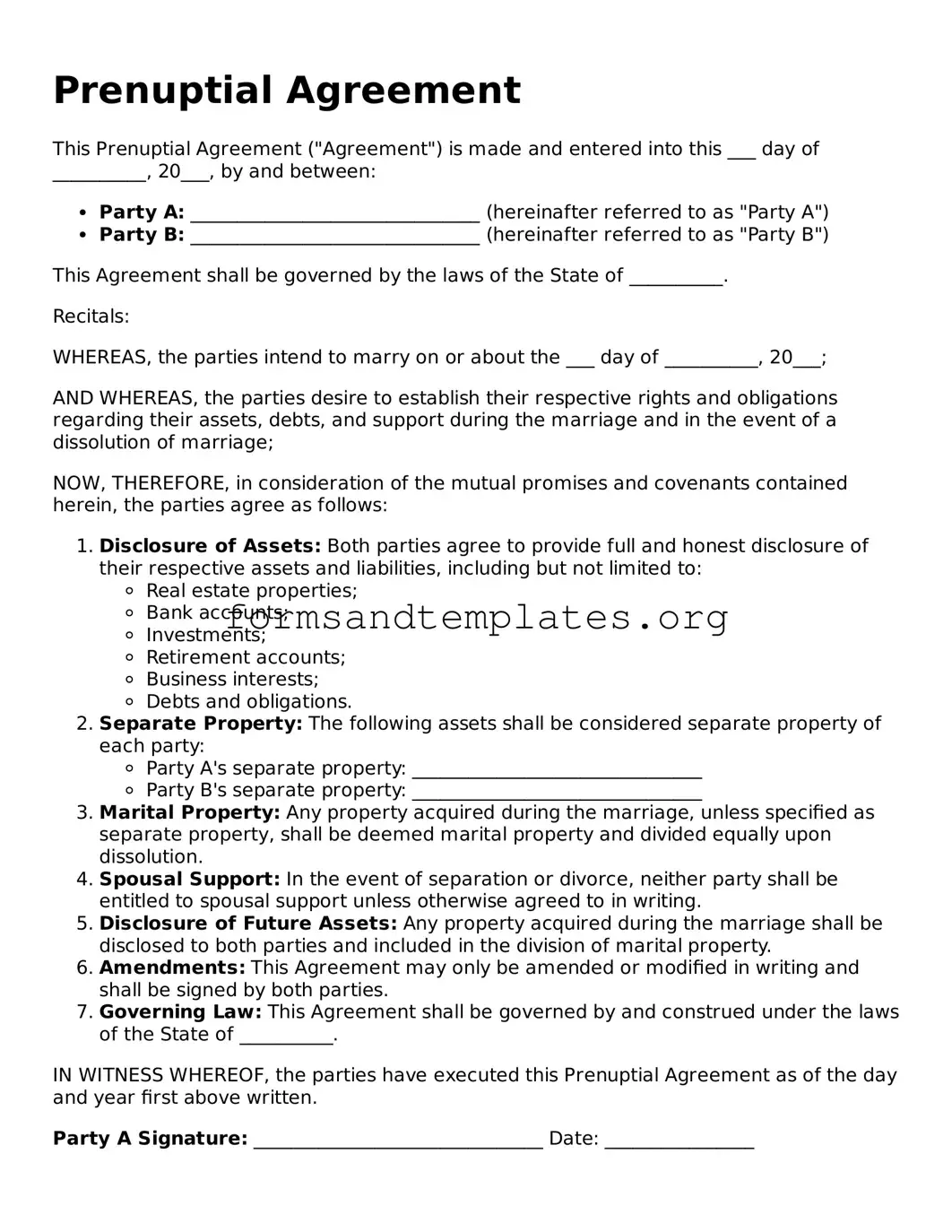Prenuptial Agreement
This Prenuptial Agreement ("Agreement") is made and entered into this ___ day of __________, 20___, by and between:
- Party A: _______________________________ (hereinafter referred to as "Party A")
- Party B: _______________________________ (hereinafter referred to as "Party B")
This Agreement shall be governed by the laws of the State of __________.
Recitals:
WHEREAS, the parties intend to marry on or about the ___ day of __________, 20___;
AND WHEREAS, the parties desire to establish their respective rights and obligations regarding their assets, debts, and support during the marriage and in the event of a dissolution of marriage;
NOW, THEREFORE, in consideration of the mutual promises and covenants contained herein, the parties agree as follows:
- Disclosure of Assets: Both parties agree to provide full and honest disclosure of their respective assets and liabilities, including but not limited to:
- Real estate properties;
- Bank accounts;
- Investments;
- Retirement accounts;
- Business interests;
- Debts and obligations.
- Separate Property: The following assets shall be considered separate property of each party:
- Party A's separate property: _______________________________
- Party B's separate property: _______________________________
- Marital Property: Any property acquired during the marriage, unless specified as separate property, shall be deemed marital property and divided equally upon dissolution.
- Spousal Support: In the event of separation or divorce, neither party shall be entitled to spousal support unless otherwise agreed to in writing.
- Disclosure of Future Assets: Any property acquired during the marriage shall be disclosed to both parties and included in the division of marital property.
- Amendments: This Agreement may only be amended or modified in writing and shall be signed by both parties.
- Governing Law: This Agreement shall be governed by and construed under the laws of the State of __________.
IN WITNESS WHEREOF, the parties have executed this Prenuptial Agreement as of the day and year first above written.
Party A Signature: _______________________________ Date: ________________
Party B Signature: _______________________________ Date: ________________
Witness Signature: _______________________________ Date: ________________
Witness Signature: _______________________________ Date: ________________
